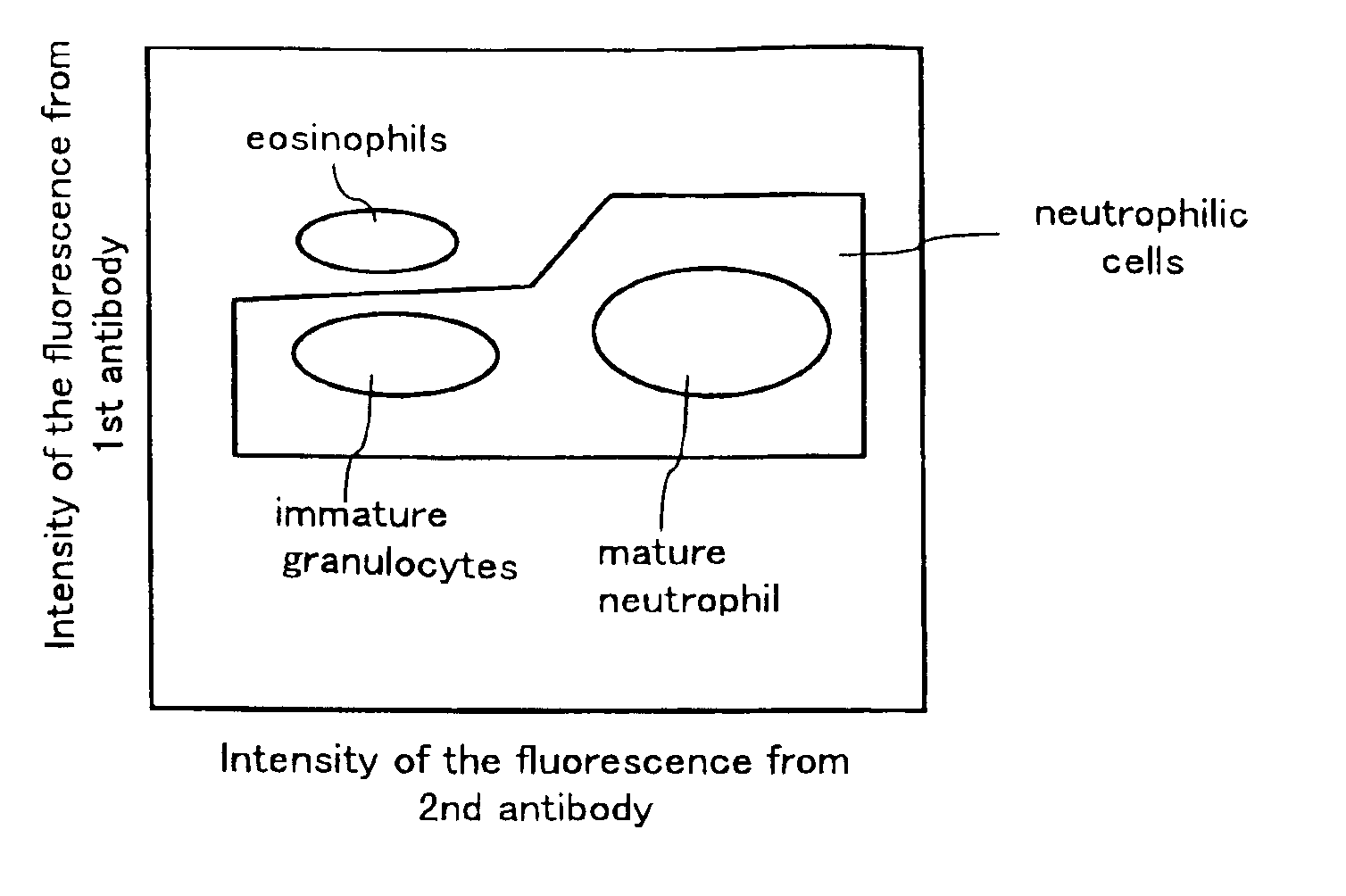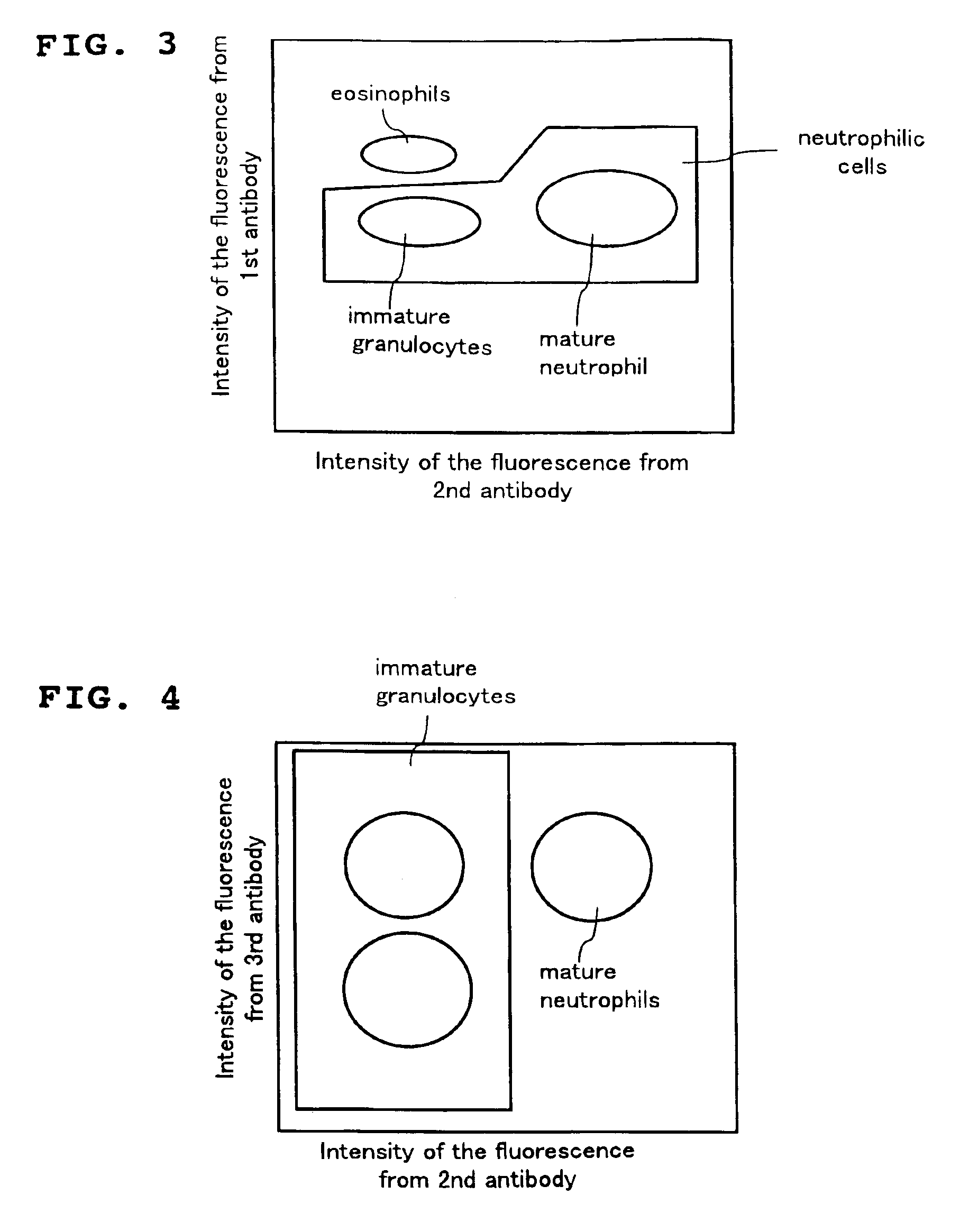Method for classifying and counting leukocytes
- Summary
- Abstract
- Description
- Claims
- Application Information
AI Technical Summary
Problems solved by technology
Method used
Image
Examples
example 1
[0059]Reagents having the following compositions were prepared:[0060]① Fluorescence-labeled Antibodies[0061](a) PerCP-labeled anti-CD45 antibody (produced by Becton Dickinson, Antil-Hle-1, the first antibody having red fluorescence)[0062](b) FITC-fluorescence-labeled anti-CD16 antibody (produced by Becton Dickinson, Leu-11b, the second antibody having green fluorescence)[0063](c) PE-labeled anti-CD11b antibody (produced by Becton Dickinson, Leu-15, the third antibody having orange fluorescece)[0064]② Ammonium Chloride Base Hemolysing Agent[0065](d) Ammonium chloride (NH4Cl) 8.26 g / L[0066](e) Potassium hydrogencarbonate (KHCO3) 1.0 g / L[0067](f) EDTA-4Na 0.037 g / L[0068](g) Purified water
[0069]Ten μL of the FITC-labeled anti-CD16 antibody, 10 μM L of the PE-labeled anti-CD11b antibody and 10 μL of the PerCP-labeled anti-CD45 antibody were added to 100 μL of peripheral blood anticoagulated with heparin. The resulting mixture was incubated for about 30 minutes at room temperature to fluo...
example 2
[0082]Immature granulocytes in peripheral blood were measured by the same method as in Example 1. Analysis was made by enclosing the two groups of immature granulocytes with separate windows W5 and W6, counting the numbers of stage-I immature granulocytes in window W5 and stage-II immture granulocytes in window W6 and obtaining the ratios of the stage-I and stage-II immature granulocyte counts to the total leukocyte count.
[0083]Separately from Example 2, immature granulocytes of each type were analyzed by a manual microscopic method (May-Grünwald-Giemsa stain) with use of a hematological sample substantially the same as used in Example 2. Additionally, the stage-I immature granulocytes identified by the method of the invention correspond to promyelocytes and myelocytes identified by the manual microscopic method and the stage-II immature granulocytes identified by the method of the invention correspond to metamyelocytes identified by the manual microscopic method.
[0084]FIG. 12 is a ...
PUM
 Login to View More
Login to View More Abstract
Description
Claims
Application Information
 Login to View More
Login to View More - R&D
- Intellectual Property
- Life Sciences
- Materials
- Tech Scout
- Unparalleled Data Quality
- Higher Quality Content
- 60% Fewer Hallucinations
Browse by: Latest US Patents, China's latest patents, Technical Efficacy Thesaurus, Application Domain, Technology Topic, Popular Technical Reports.
© 2025 PatSnap. All rights reserved.Legal|Privacy policy|Modern Slavery Act Transparency Statement|Sitemap|About US| Contact US: help@patsnap.com



